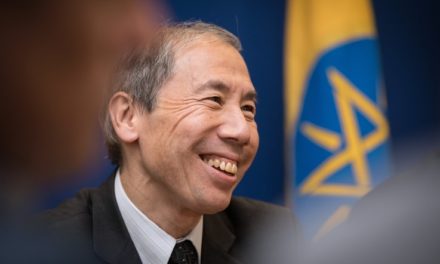Laos is preparing to build what will be its seventh of nine planned large-scale Mekong river mainstream dams, the latest project in its controversial economic strategy to become the “battery of Southeast Asia,” sources in the country told RFA.
The 728-megawatt Phou Ngoy Dam, with a projected completion date of 2029, would join the currently operational Xayaburi and Don Sahong dams as well as the Pak Beng, Pak Lay, Luang Prabang and Sanakham dams, in various stages of planning. Two others, Pak Chom and Ban Koum, are on the horizon after that.
“The initial environmental and social impact study for this dam has just been approved, however, the project still needs a lot more study,” an official of the Energy and Mines Department of Champassak province in the country’s deep south told RFA’s Lao Service on Dec. 23.
“With regard to relocation of villagers, we haven’t talked about it yet. We haven’t discussed about when and where the affected villagers will be moved to,” said the official, who requested anonymity to speak freely.
The official said that the dam is an integral part of the government’s strategic development plan.
“The Lao government is determined to build this dam,” the official said.
He said the project has not been submitted to the Mekong River Commission (MRC) to undergo the Prior Consultation and Agreement (PNPCA) process yet “because the detailed environmental and social impact study is not yet complete.”
The MRC is an inter-government agency that works with regional governments to manage the Mekong’s resources.
Laos submitted the Sanakham Dam for PNPCA approval in May and the agreement is expected to be completed in mid-2021, after which the new dam’s plan will be submitted, the official said.
'We don't want to be relocated'
In a common refrain heard in Laos, residents of the affected area told RFA they were opposed to yet another Mekong River dam.
“Some time ago they conducted a survey asking us about our property, about our shops and fruit trees,” a resident of Khonken village in the province’s Champassak district told RFA.
“We haven’t heard anything about relocation. We don’t want to be relocated. We don’t know where we’ll be moved to. We’ve been here for generations and we believe that this is our permanent home,” the resident said.
Repeated accounts of villagers displaced by dam projects ending up poorer than they started has made him and his neighbors worried about their quality of life after resettlement, the villager said.
The residents of Khonken are mostly farmers who grow rice and vegetables or raise livestock. Some run small businesses like restaurants and guesthouses that cater to tourists, mostly from neighboring Thailand.
They fear that the dam would inundate the area’s biggest attractions, rapids on the Mekong river and beaches on its banks.
The entire village will likely be relocated, affecting of 142 households, or about 800 residents.
A second resident of Champassak district told RFA that many villagers are asking the government to reconsider the Phou Ngoy Dam project.
“The government is building these dams for money, but this one will destroy the beauty of nature and our property,” the resident said.
“I heard about the dam project. We told them we don’t want this dam,” another resident told RFA.
Including Khonken, the $2.4-billion project would affect more than 200 hectares of land, home to 88 villages in seven districts. The most affected village would be Khon Ken village, where 811 residents reside in 142 households according to the project's feasibility studies.
Though no power purchase agreement (PPA) has been signed, two South Korean construction companies, Doosan Heavy Industries & Construction and Korea Western Power, have been tapped to build the dam between 2022 and 2029 in cooperation with Charoen Energy and Water Asia (CEWA) entities connected to the Thai and Lao governments.
Thai concerns
With the Mekong river marking half of the 1,845-kilometer border between Laos and Thailand, Thai citizens affected by projects complain to Bangkok.
“We’re monitoring this project closely. The company has not sent us all the information,” Dr. Somkiat Prajamwong, secretary-general to the Office of the National Water Resources of Thailand, told RFA.
“After the Sanakham Dam PNPCA is complete, we’ll look at the Phou Ngoy Dam. If built, the dam might affect the Thai side. The water might overflow into Thai territory,” he said.
Prajamwong noted that the dam would be only 18 kilometers south of Pakse, the capital of Laos’ Champassak province, where more than 100,000 people live. It will also be only 50 kilometers from the confluence of the Mun and Mekong Rivers in Thailand’s Sisaket province.
Laos has built dozens of hydropower dams on the Mekong and its tributaries under its “Battery of Southeast Asia” vision, with ultimate plans for scores more hoping to export the electricity they generate to other countries in the region.
Though the Lao government sees power generation as a way to boost the country’s economy, the projects are controversial because of their environmental impact, displacement of villagers without adequate compensation, and questionable financial and power demand arrangements.
Reported by RFA’s Lao Service. Translated by Max Avary. Written in English by Eugene Whong.





